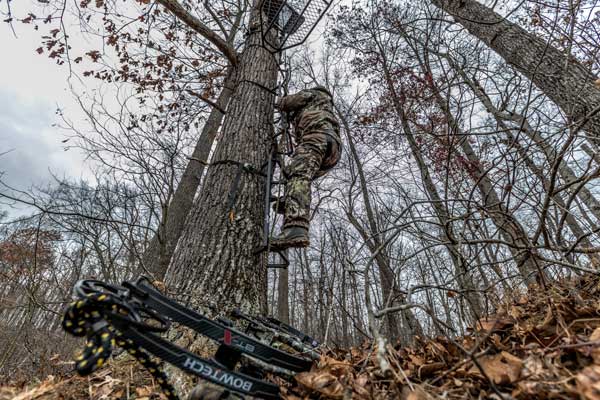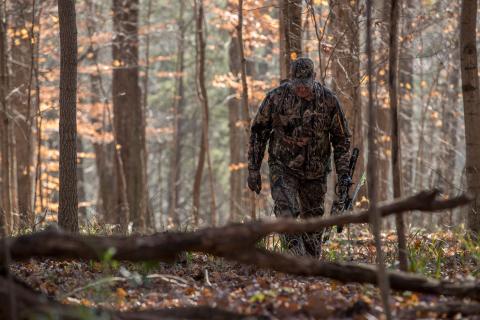
Many hunters have questions about treestand placement. Every situation is different and there aren't any rules where there aren't exceptions. However, there are some general practices that will help in most situations when placing a treestand.
1. Play the wind and thermal
Once you have your general area selected, pay heed to the wind and thermal current in the area. You want to remain downwind or cross-wind of where you think the deer will be. This is the most important of the four.
2. Use the available cover
This kind of goes hand in hand with treestand height - in a bald tree you’re more likely to go higher than in a tree with good cover. Look for trees that lose their foliage late, clusters of trees, or trees with a “Y” in the trunk for concealment.
3. Pick a tree that is easy to climb
If you have a great spot, but you alert every deer within 400 yards by making a commotion while climbing your stand, your great spot will go for naught. Use enough tree steps or climbing sticks so you can scale the tree easily, safely and quietly.
4. Prepare the site to make the shot
So you have a good spot, you have a stand in the perfect ambush tree, but what happens if a deer walks through and there’s no way you can take a bow shot. Take the time to trim some shooting lanes or “windows” so you can sneak an arrow through when the “moment of truth” arrives.
Remember, there’s also nothing wrong with a good ground blind. But with whitetails you’ll need to set the blind well in advance of the hunt or “brush it in” well and camouflage the blind to blend in with the surroundings.
More whitetails are harvested by archers using treestands than by any other method. If you choose a stand that you feel safe in and use these basic treestand placement rules, you'll be on your way to harvesting more deer, bigger bucks and maybe that trophy of a lifetime.
Using funnels is a great way to determine treestand placement. Much of choosing the proper stand site has to do with “structure.” In the same way that an angler finds the “spot on the spot,” the lay of the land and topography differences that restrict or “guide” movement are keys to stand placement. Whitetail travel from place to place using cover and terrain to their advantage.
Bonus Tip from OutdoorMetrix
Considering the time and effort involved in picking spots and hanging stands, you should also take a few seconds to log each hunt in every stand. By tracking your hunt log data with OutdoorMetrix, you can measure exactly how good each spot is, compare hunting results with weather conditions, manage hunting pressure, keep spots fresh, predict when to go and hunt a little smarter.
__________
This tip is courtesy of the GameKeepers Field Notes, a weekly wildlife and land management email newsletter produced by the Mossy Oak GameKeepers.
A GameKeeper by definition is someone who truly loves AND lives the land, the critters and nature…not just during hunting season but all the time. A GameKeeper wants to be outdoors every day and work the dirt while living their personal “obsession”.
Find out more about what makes a GameKeeper by visiting our website.



























